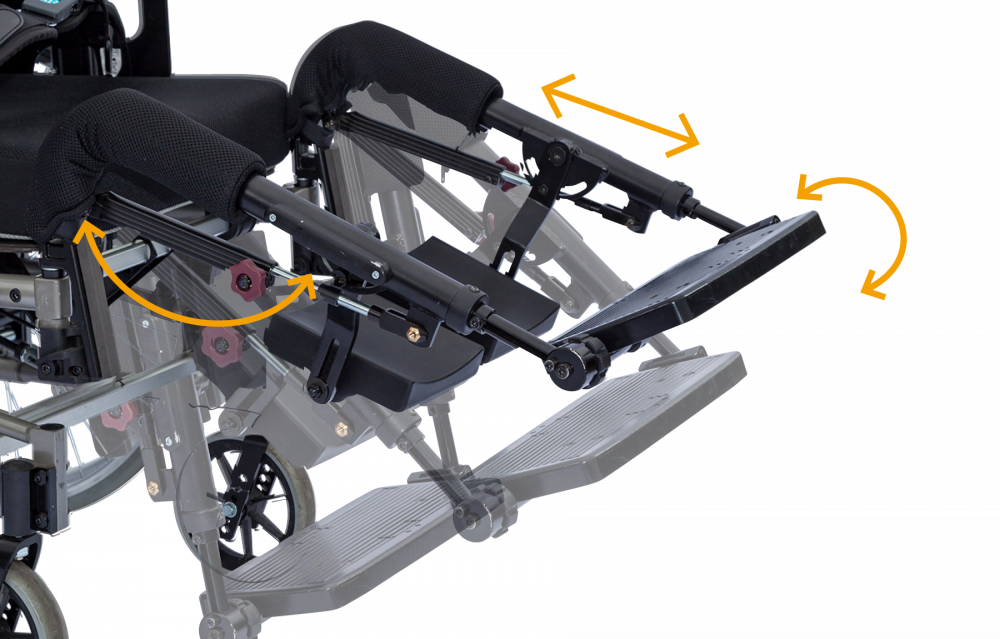Why choose dynamic legrests over angle-adjustable legrests?
A good number of studies have been done on dynamic leg supports. Most studies have been done on standard angle-adjustable legrests (although angle-adjustable legrests can move, they are thus not “dynamic” in our eyes)
We would like to elaborate here on why “real” dynamic leg supports are preferable to angle-adjustable leg supports and in which situations.
Why is it important to have these 4 movement options in a dynamic leg support?
We at Netti believe that it is important to adapt the wheelchair to the user. When a mechanical challenge occurs, we believe that it should be solved at the place of action, meaning a mechanical knee joint challenge should be solved at the knee joint. When involuntary movements occur, they will most often be seen in various areas at the same time and influence the whole body. The lower extremities often move a lot, and this is the reason why the leg supports need to be able to respond to that. Each movement should be solved at the area where it occurs and with the directions and movements needed.
The knee flexion / extension
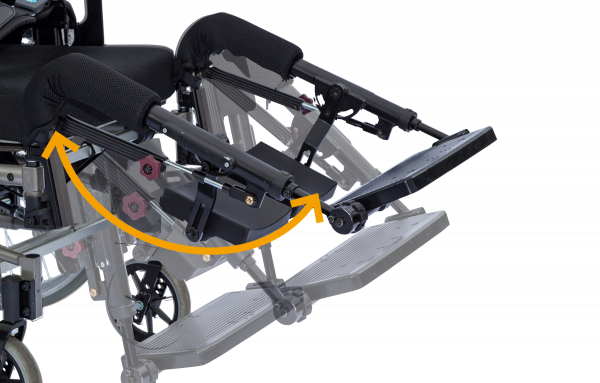
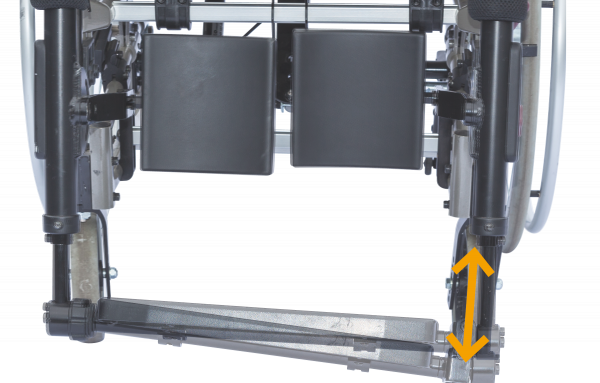
The elevation of the leg supports is directly related to knee extension. In fact, the angulation of lower leg supports can affect the posture of the sitter’s hip if the angular modification changed the distance from the seat front to the foot supports. This change results from the fact that the leg support’s axis of motion is not aligned with the knee joint axis. This inter dependency between leg support angularity and the distance between the foot support and seat, requires the linear placement of the lower leg and foot support to be adjusted in synchrony with the leg support’s angular modification. Products that do not address this changing geometry can cause discomfort, loss of position and soft tissue trauma [1, 2].
For example, if a leg support is elevated and the foot support is not lengthened, then the hip and knee joints will be forced into flexion, and weight-bearing pressure will increase under ischial tuberosities. This risk of pressure increase can be avoided by selecting equipment that allows the foot supports to lengthen as the leg support proclines. Netti dynamic leg supports have the correct alignment of the axis of the leg support and the axis of the extension / flexion in the knee joint.
Several manufacturers try to solve the mechanical challenge at the knee joint by compensating at different areas which has led to a design of a new leg support called a compensatory (CMP) leg support.

Example of CMP leg support as used in (2)
We at Netti think differently. We believe that the solutions as made for a CMP leg support should be used to solve the total extension which occurs in the whole body when the user has an extension spasm or involuntary movement. This is not a good enough solution to compensate for the misalignment of the knee joint to the leg support and the total body extension when the user has involuntary movements or spasms.
The plantar / dorsal flexion which occurs in the ankle joint and foot
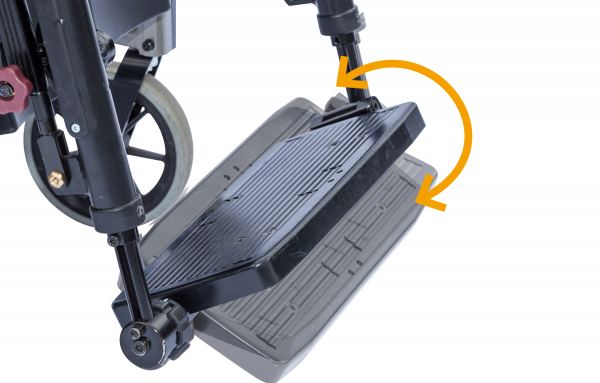
When involuntary movements occur in the lower extremities, there will most of the time be a plantar / dorsal flexion movement in the ankle and foot. In many cases there is an extension pattern which results in a strong plantar flexion of the feet. A regular foot plate or foot board will not allow for this movement. In that case, a closed kinetic chain is created and tension is built op in the body which will result in discomfort, increased muscle spasm and can result in injury of the user or breakage of the wheelchair.
The Netti dynamic leg support will allow for this movement and an open kinetic chain is created, lower muscle tension is built up resulting in less discomfort, reduced muscle spasm, reduced injury of the user or breakage of the wheelchair.
The longitudinal movement in the direction of the lower legs, to adjust for total body extension
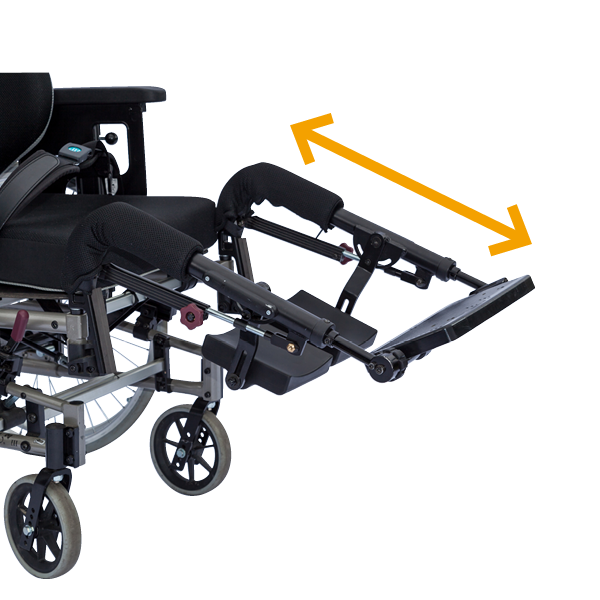

When involuntary movements occur, they often come forward at various areas of the body at the same time as being a part of a pattern, very often being an extension pattern.
An extension movement will increase the total length of the body and the Netti dynamic leg supports allow for this.
A regular leg support will not allow for this movement. In that case, a closed kinetic chain is created and tension is built op in the body which will result in discomfort, increased muscle spasm and can result in injury of the user or breakage of the wheelchair.
The Netti dynamic leg support will allow for this movement and an open kinetic chain is created, lower muscle tension is built up resulting in less discomfort, reduced muscle spasm, reduced injury of the user or breakage of the wheelchair.
Independent movement between each of the leg supports

We all know that the body is build symmetric but most of the time does not function in a symmetric way. Involuntary movements occur a-symmetric and it is important to allow for this at the leg supports.
References:
- E. Ward, Prescriptive Seating for Wheeled Mobility: Vol. I. Theory, Application and Terminology. Kansas City, MO: HealthWealth International, 1994
- Biomechanical Analysis of Legrest Support of Occupied Wheelchairs: Comparison Between a Conventional and a Compensatory Legrest Rachid Aissaoui, Member, IEEE, Sadeghi Heydar, Jean Dansereau, and Michèle Lacoste

